One of these, We had the doors off because it was September 1986 and we were on maneuvers in Baveria. Somehow our "track" wandered off, and this is before cell phones and we didn't have a radio and the track was moving and hasn't set up yet. Well I was going through this German town and following what I believed was our "Track". A Track was Army slang for any of the M113 Series of vehicles....There were "tanks" which were the M60's and the new M-1's and the "Tracks" were the 113 series, I really don't know what they called the later Bradley series of APC's. Well anyway we we were following one of these....
Well anyway whenever a tracked vehicles uses it "Laterals" or even its "Pivot steer" it locks the tracks and turns on the stopped track. Well when it makes the turn, it picks up all the rocks and gravel that is on the road and sprays then in a pattern. Well I started driving down this town and noticed the "pattern" and turned down that road and my NCO asked "What the hell are you doing?" and I replied "Following the Track". He snorted "Yeah right.....". but I went through this town and drove straight and slowed down when I got to a side street and looked for the "pattern", and kept the process going for a while and finally we saw the track 45 minutes later. I glanced at my NCO and he shrugged, but I think I impressed him with that.
I shamelessly clipped this from "Art of Manliness"
•
October 13, 2016
Last updated: January 26, 2019
How to Track a Human
But it’s not.
The scout was simply using a set of keen, field-developed senses, and practicing good forensics.
A few years ago when I did the ITS Tactical Muster, one of my favorite classes at the event was on human tracking, taught by professional combat tracker John Hurth. In just a few short hours, John was able to show us how to know what’s going on with someone on the lam and where he or she is headed simply by looking at their footsteps or noticing a broken branch.
Why would you need to know how to track a human? You’ll probably never have to go on a manhunt for a fugitive, but it’s a handy skill to have nonetheless. Maybe your kid wanders away from your house, or you lose a buddy in a remote wilderness area. Instead of wandering frantically and aimlessly, calling their name, you can know how to search for them effectively and efficiently.
Plus, once you know how to track a human, you can reverse engineer the process as well; that is, you’ll better be able to make your own escape without leaving a trail. You know, just in case you find yourself on an island, being chased by a stalker playing “the most dangerous game.”
Below, we provide a primer on tracking humans. Keep in mind, to really learn how to do this stuff, you need to practice it and practice it for years. But with some dedication, you may eventually reach the level of tracking evinced by the crack trackers in Butch Cassidy and the Sundance Kid, of whom the protagonists repeatedly said with exasperation, “Who are those guys?”
Develop Your Situational Awareness
The most important attribute a tracker must develop is his situational awareness. Without it, clues and signs that would lead him to his target go unnoticed.Situational awareness comes down to two things: 1) observing, and 2) correctly interpreting your observations.
Learning how to become more observant takes time and dedication. It requires changing your mindset, training your memory and senses, and daily practice in truly noticing what you see. Fortunately, we have some fantastic guides on how to do all of those things:
- How to Develop the Situational Awareness of Jason Bourne
- The Sioux Guide to Situational Awareness
- 10 Tests, Exercises, and Games to Heighten Your Senses and Situational Awareness
Broaden and Deepen Your Mental Models
Mental models are simply ways of looking at and understanding the world. These paradigms create our expectations for how the world works — helping us grasp what’s happened before, what’s happening now, and what’s likely to happen next.For a tracker, the mental models he needs to broaden and deepen the most are the ones that will better help him find his target. These fall into two main categories: environment and psychology/habits.
Environment
The most obvious subject a tracker needs to know inside and out is the environment in which he is tracking. He needs to understand things like how snow keeps a track changes depending on whether it’s more wet or dry. He needs to know that spiders usually spin their webs late in the evening (if footprints are beneath an unbroken spider web, the tracker can assume that the target passed the point earlier in the day). He needs to know about the fauna and rocks in the area. He needs to know how the wind blows. He needs to know the usual temperature of embers a certain number of hours after a campfire has burned out.He also needs to know how stuff ages in an environment. A skilled tracker can look at objects or signs in his surroundings and roughly gauge how long ago they were left there by his target. He knows how long it takes for paper to start to brown or a plastic bottle to become discolored after being discarded in a desert or forest. He should be able to look at a broken branch and, based on the color of the exposed wood, roughly guess when it was broken. He even knows what human feces look like 1, 2, 3 days after it was excreted by his target. Developing these mental models will come with practice and time, but one way to build them up before you need them is to make “aging stands.”
Aging Stands: The Tracker’s Experiment
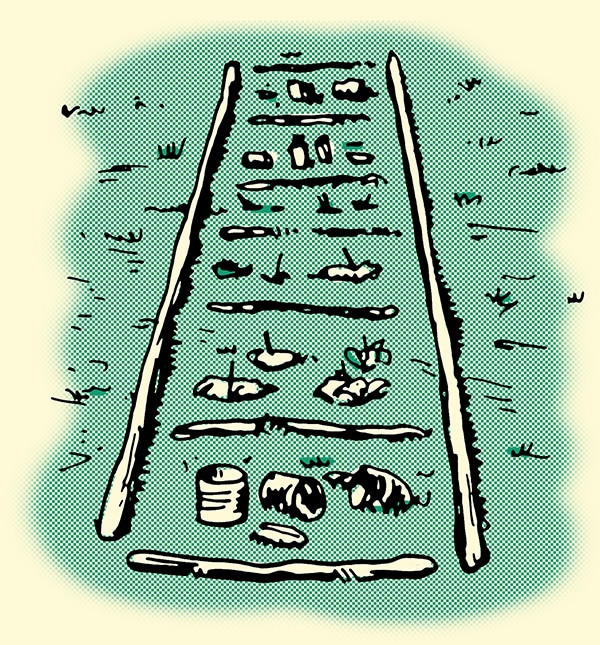
Aging stands are described by expert combat tracker John Hurth as “science experiments” for trackers. You make a one-row grid on the ground out of branches and place different objects into its squares. Ideally, each square will be exposed partly to direct sunlight and partly to areas shaded and protected by trees. In week one, you put items that you want to test in the first square: footprints, paper, broken twigs, water bottles, and yes, even poop. You want to make sure you have duplicate samples in the shaded and unshaded part of the square.
Each day, visit your aging stand and take notes on how things have changed. How have the exposed branches changed color? Has the paper started fading? What’s happened to the poop? Have the impressions of the footprints changed over time?
The next week, move to the next square in the grid and put fresh samples of the same items in it. Compare them to the samples in the first week’s square. Take notes on differences. The next week put new samples in the third square. Compare them to the first and second week’s squares. Over time, you’ll get a rough idea of the aging progression undergone by both natural and manufactured items.
You’ll want to conduct aging stand experiments at different times of the year — spring, summer, fall, and winter — to learn how seasonal variations in humidity, temperature, and precipitation affect the aging process. It’s a laborious exercise, but it’s essential for creating the mental models you need to successfully track someone.
Human Psychology & Behavior
A tracker needs to not only know what’s going on in the environment
in which he’s following a target, but what’s going on in the target’s
head as well. He needs to develop mental models that deal with human
behavior, and this means having a robust knowledge of human psychology
and sociology. Knowing the mindset and cultural background of your
target can help you know how he’ll act and lead you to where he is. The
famous scout Frederick Russell Burnham had this to say about developing these kinds of mental models:“It is imperative that a scout should know the history, tradition, religion, social customs, and superstitions of whatever country or people he is called on to work in or among. This is almost as necessary as to know the physical character of the country, its climate and products. Certain people will do certain things almost without fail. Certain other things, perfectly feasible, they will not do. There is no danger of knowing too much of the mental habits of an enemy. One should neither underestimate the enemy nor credit him with superhuman powers. Fear and courage are latent in every human being, though roused into activity by very diverse means.”Besides general cultural and psychological mental models, you need to develop mental models for your particular target. Does he like to eat certain foods? Does he have any medical conditions? Does he smoke or bite his nails? Is he familiar with the outdoors or is he a city dweller? Does he have any particular fears or insecurities? Does he know anyone in the area?
Knowing this sort of information about your target will inform the way you conduct your search and interpret the evidence you find in the field. For example, if you know your target smokes, you’ll be on the lookout for cigarette butts. If he has diabetes, and you come across a puddle of urine that smells fruity, you’ll know you’re on the right track.
Scan and Search: Taking in Your Environment
Now that you’re working on increasing your situational awareness by becoming more observant and developing appropriate mental models (this is in fact an exercise that should never end), it’s time to start actually tracking.When you’re out tracking, you’ll be engaging in two visual modes: scan and search.
Scan
When you scan the landscape, the goal is to get a general, big-picture overview of your surroundings. Keep an open focus. Don’t have any particular thing you’re looking for, as that will cause “target blindness” and result in your missing other pieces of evidence. Visually sweep the area for possible anomalies in your environment like tracks, litter, blood stains, etc.Rather than scanning an area haphazardly, tracking experts David Diaz and V. L. McCann recommend dividing it horizontally into thirds:
“Imagine the territory in front of you is a two-dimensional canvas of a painted nature scene. The top boundary is the horizon; the bottom boundary is the ground in front of you. Now divide that canvas into three equal parts: the foreground, the mid-distance, and the far ground…In this way, you methodically work your way up to the far ground and ensure that you don’t miss anything — distant or near — lying before you.
In order to ‘see’ everything in such a vast area, it must be scanned systematically. With a horizontal movement of your eyes, sweep the foreground from left to right, right to left, and left to right, moving your line of vision up just enough to slightly overlap the area above the last sweep.”
Search
Diaz and McCann describe searching as “in-depth analysis of an area or object.” You can begin searching at any point in the scanning process once you’ve noticed an anomaly. Searching involves looking at the anomaly more closely and recording it in your mind or notebook for later analysis.Just because you’ve searched one anomaly, doesn’t mean you should stop your scan of the area. Keep scanning and looking for more anomalies that you can more closely examine. As you continue your scan and search, take extra caution to avoid contaminating signs that you’ve uncovered. Leave litter where you found it, and don’t walk on footprints. You want to leave things in their original locations so you can put the pieces together and construct a story based on the evidence found.
Using Light for Scanning and Searching
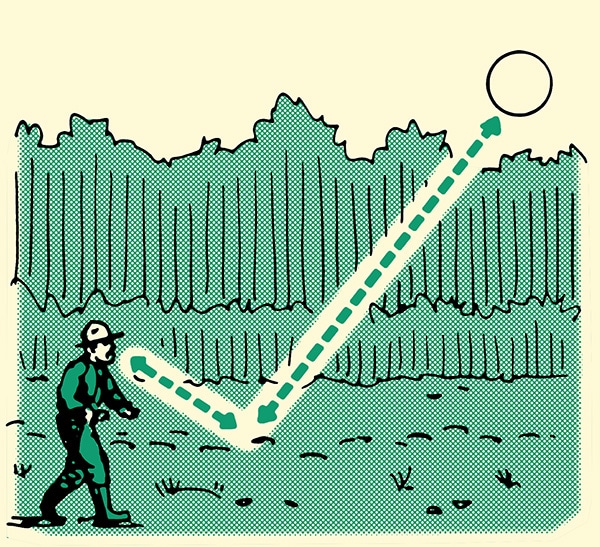
As you scan and search, use the light available to you to better locate possible anomalies. For example, in the morning and evening, the sun casts long shadows over impressions in the ground, bringing them into sharper relief. To better see these shadows, position yourself so that the tracks you’re following are between you and the light source. This will require you to change your position in relation to the tracks. Be mindful of not contaminating them with your own prints as you do so.
Tracking at night is possible with the assistance of a light source like a flashlight. You’ll want to use a colored light like green or red to avoid disrupting your night vision. (Side note: red used to be the preferred nighttime light color, but many operators are switching to green because it allows them to see objects more clearly without reducing night vision that much.)
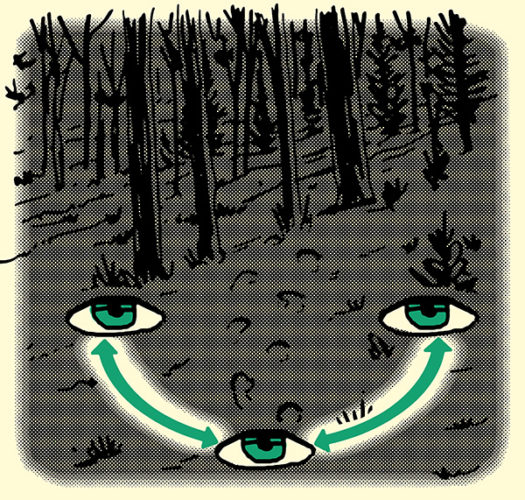
When you’re searching at night, if you look directly at the object you’ve identified, you’ll likely stop seeing it. Looking directly at objects requires you to use the cone area of the retina, and that’s not very active during low-light settings. To make up for this deficiency, you’ll want to use what Diaz and McCann call “off-center vision.” Instead of looking directly at the object you’ve identified, you’ll want to look left, right, above, and below it, pausing at times to verify the properties of the object.
Know What To Look For
As you scan and search your environment, you want to be on the lookout for a few indicators that will help you track your target. Hurth suggests being on the lookout for the following visual indicators (I haven’t included all of them — check out John’s book for the complete, exhaustive list):Ground Indicators (on the ground)
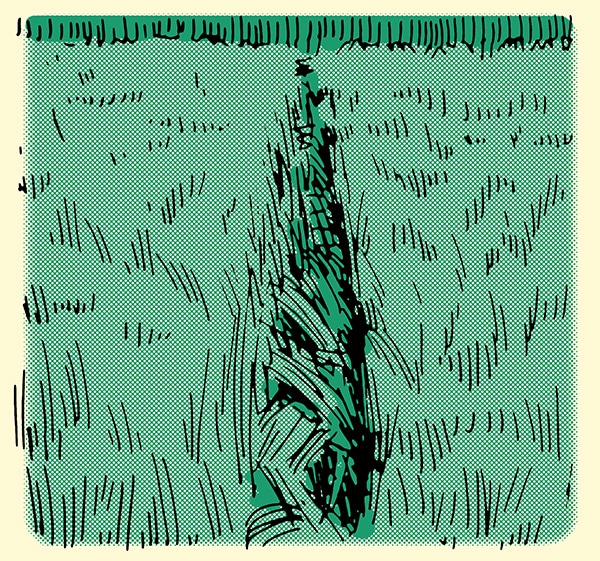
- Footprints
- Vehicle tracks
- Trampled grass
- Boot and shoe scuffs
- Turned over dead leaves
- Disturbed grass or soil
- Mud, soil, sand, and water transferred from footwear onto another medium
Track Traps: The Honey Pot of Ground IndicatorsAerial Indicators (above your ankle)
Hurth suggests being on the lookout for “track traps.” These are areas on the ground that do an excellent job of capturing your target’s tracks. He calls them “honey pots” because they leave so much information behind. Mud, sand, soft dirt, and snow are great examples of track traps. Bodies of water or oil spills can be track traps too. A target who steps in water or oil will likely leave footprints on the ground after stepping in the fluid.
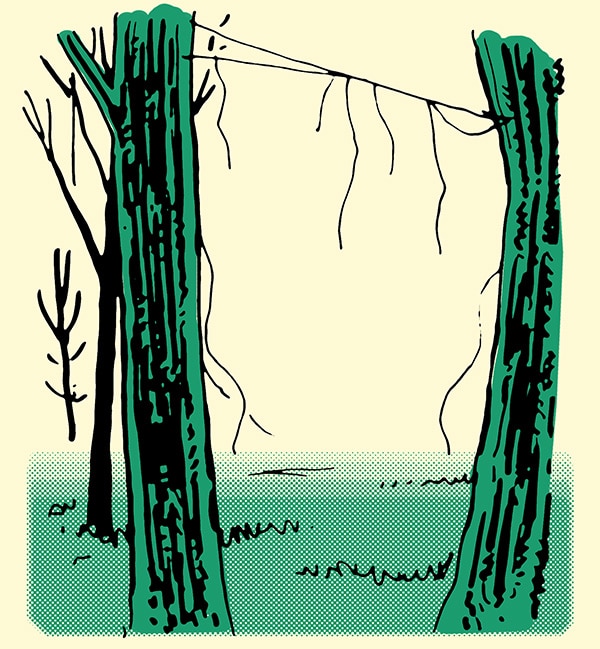
- Broken cobwebs
- Detached or missing leaves
- Broken branches that point in the direction of the target
- Scratches or scuffs on trees
- Cut or broken vegetation
- Tall grass or vegetation pushed down into an unnatural position
- Clothing fabric in branches
- Hair in branches
- Cigarette butts
- Candy and food wrappers
- Spent ammo casings
- Used medical supplies
- Gum/tobacco
- Clothing
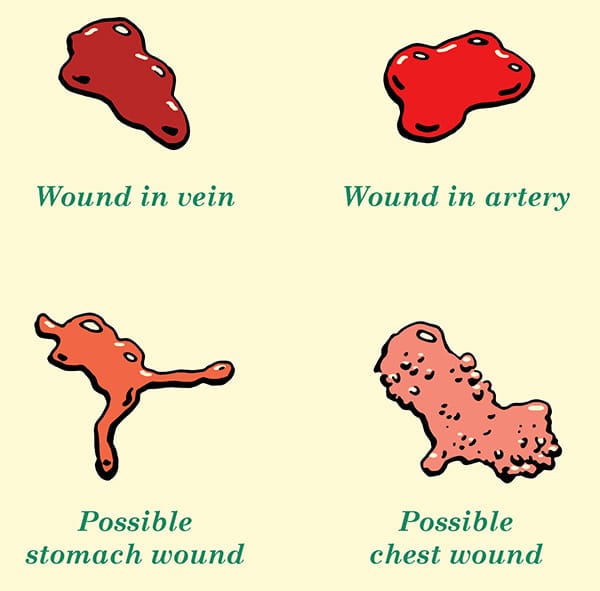
Your target might be injured and consequently leaving blood stains. The color of the blood stain can tell you a lot about the injury he or she has and how long it’s been since they left the blood stain there.
- Dark red drops of blood. Indicates a venous wound. Non-life-threatening.
- Bright red streaks of blood. Indicates a possible arterial wound. Life-threatening.
- Pink, frothy blood. Indicates a possible wound to the lungs.
- Light red, foul-smelling blood. Indicates a possible wound to the stomach.
Bodily Discharge Indicators
Vomit, poop, pee, snot — these bodily discharges may not be pleasant to contemplate, but they can not only help lead you in the direction of your target, but also paint a picture of his current condition.
Vomit and poop can tell you what sort of food your target’s been eating. If there’s a lot of liquid, clear vomit or you see diarrhea, there’s a chance he could be dehydrated.
If you find a urine spot that has a very fragrant ammonia smell, the target is likely dehydrated. If it has a fruity smell, there’s a chance he’s diabetic.

Man peeing
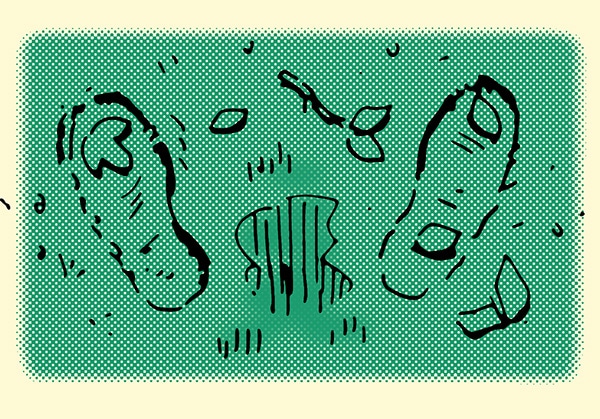
Woman peeing
Audio and Olfactory Indicators
As a tracker, you can’t just rely on your sight to track down your target. Sounds — heavy breathing, talking, crying, movement in brush, coughing, etc. — can provide insights as to where your target is.
Smells can also provide useful clues. The smell of smoke can lead you to a campfire where the target is currently or has been recently. If the target’s been without a shower for a couple of days, he might also be giving off some pungent body odor.
Bottom line: as you scan and search with your eyes, don’t take your nose and ears offline. They can provide useful information you’d be missing using sight alone.
Identifying and Interpreting Footprints
While you should be scanning and searching for signs and indicators like blood, trampled grass, and broken cobwebs, footprints will be one of your primary ways of following and tracking your target.A professional tracker is so adept at tracking footprints that he can identify individuals simply with a glance at the impressions in the ground. They can also immediately tell if the person is running, carrying a load, carrying another person, or even walking backwards.
The ability to create this dossier on a target simply by looking at their footprints requires some careful observation. Here’s what to look for when identifying and interpreting footprints.
Collect Information on a Footprint Data Card
A footprint data card is your police sketch of your target’s footprint. (John has a template in his book.) You’ll draw the pattern of the sole of his footwear on the card, determine if it’s a boot, shoe, or sandal, and make measurements that include the length of the print overall, the width of its heel (and its length if it’s a boot), and the width of the ball of the foot. You’ll also note if the impression reveals any manufacturer or sizing labels and if the toe is rounded, square, or pointed. You’ll want to record the time and location you located the print and the direction of travel as well.Hurth recommends putting a nickname on top of the footprint data card based on its salient characteristics. So if you see a “Vibram” logo in a print, you can call that print “Vibram.”
If the target is barefoot, you’ll want to note whether he has a high arch, regular arch, or is flat-footed. You’ll want to measure the width of the ball of the foot and the heel. Make notes about their toes too — missing digits? Hammer toe?
Interpreting Footprints
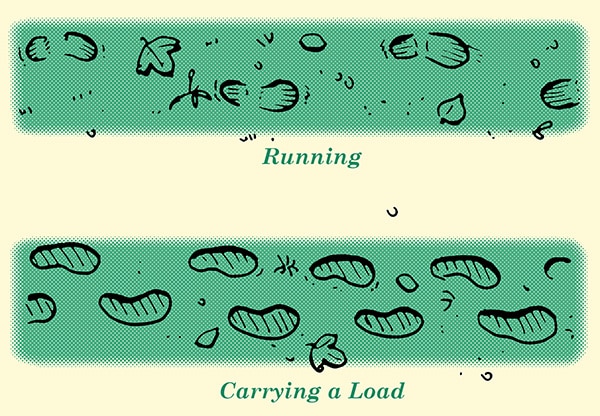
If you look closely enough at footprints, they can tell you a lot about what your target was doing when he left them.
For example, the spacing and depth of the impressions can tell you about the target’s gait — whether he was running or walking. Impressions that are far apart from each other and deeper in the toe or the heel indicate that the target was running; impressions that are shallower and closer together indicate walking.
If the gait is shorter and the impressions are deeper, the target was likely carrying a load like a backpack. If you see a short gait and deep impressions, along with intermittent additions of another set of prints next to the target’s, you can deduce that he was carrying a person (and occasionally putting them down for breaks).
A set of impressions that have a circular indention to the side indicates that the target is using a walking cane or stick.
If one foot leaves a deeper impression than the other, it likely means the target is favoring that leg and that the other leg is injured.
So as you look at footprints, don’t just stop with the observation phase. Try to put together a story of what your target was doing, as this can help you develop a theory as to what he’s likely to do next.
Determining the Number of People in a Group by Footprints
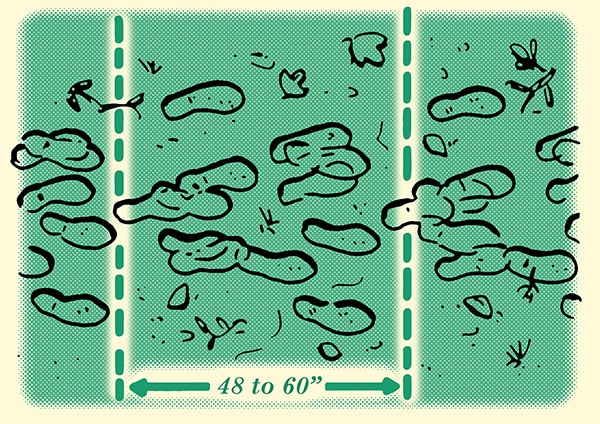
Sometimes counting the number of people in a target group is easy because there are distinct sets of footprints that you can count. But often the footprints overlap and mix together. How do you get a count then?
One way is to use the Box Method to get an estimate. Draw a line behind one print and then measure 48-60 inches forward and draw another line. Count all full and partial prints between those two lines (round up if you end on an odd number). Divide the total print count by two, and you’ll have a rough estimate of the number of people in your target group.
Practice Reading Footprints
Reading and interpreting footprints is a skill that can be acquired through practice. A great way to do that is to create an artificial track trap out of sand and then have your friends walk through it in different ways while you’re not looking. They can run, limp on one leg, carry each other, walk and then kneel, drag a body, pretend to fight each other, etc.After they’ve left their tracks, go to the track trap and interpret what they did by looking at the tracks. After you’ve recreated the scenario your friends acted out, use a rake to clear the track trap’s slate and have your buds walk through it again.
I did this exercise with Hurth at the ITS Tactical Muster and had a blast. It’s pretty cool to be able to determine whether a fight went on or if someone was carrying a rifle simply by looking at footprints.
Putting It All Together: Creating a Story of Your Target
Tracking requires you to be hyper observant of your environment while simultaneously orienting your observations to the mental models in your head. This back and forth observing and orienting allows you to create a story of what’s going on with your target even though you weren’t there to observe them firsthand. By creating this story about your target as you collect evidence, you’ll be in a better position to figure out where they’re headed so you can find them._____
Sources
Combat Tracking Guide by John Hurth (If you get the chance, take a course from John. He’s extremely knowledgeable and a great teacher.)
Tracking Humans by David Diaz and V.L. McCann


No comments:
Post a Comment
I had to change the comment format on this blog due to spammers, I will open it back up again in a bit.